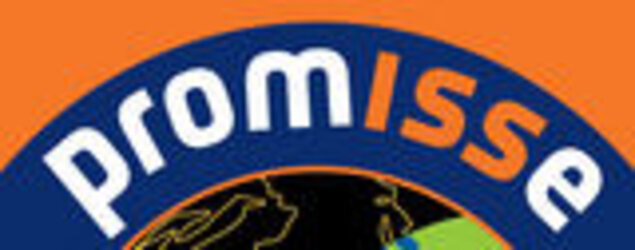André's tasks in space
André was assigned to the PromISSe mission in 2009. After arriving at the International Space Station he will take up his tasks as a flight engineer and resident crewmember.
ESA astronaut André Kuipers was assigned to the PromISSe mission in 2009. After arriving at the International Space Station in 2011 he took up his tasks as a flight engineer and resident crewmember.

A great multitasker and teamplayer, André was busy with varied duties from the outset of his flight.
André flew on the left side of the three-seat Soyuz capsule, a seat traditionally assigned to European astronauts serving as flight engineer. In this Soyuz role he was be the ‘right hand’ of the Soyuz commander, Oleg Kononenko, during the ascent and descent phases.
André was the prime operator for the ATV Edoardo Amaldi rendezvous and docking. Although the spacecraft docks automatically with the ISS, he monitored the approach and was ready to take over control if needed. Once attached to the Station, he was in charge of logistics operations on the vehicle.
André supported complex robotic operations. He is trained in the Space Station Remote Manipulator System (the Station’s principal robotic arm).
André was closely involved in the berthing operations of the visiting Dragon cargo vehicle during its maiden flights to the Station.
André, as a medical doctor himself, is trained as a crew medical officer. In this function he could support the flight surgeon and medical team on the ground, in case of medical issues on board.
- André is fully trained to perform a possible Extra Vehicular Activity (EVA). This means that, if needed, he could have performed a spacewalk outside the ISS.
Spaceflight experience

Russian spacecraft, experiencing weightlessness and living in the core modules of the International Space Station are nothing new to André Kuipers. PromISSe is his second opportunity to work in orbit and he will contribute with his solid expertise in human spaceflight, this time on a much longer mission.
André carried out the 11-day Delta mission in April 2004. He was assigned then as flight engineer for a Soyuz flight sponsored by the Dutch government. The mission had a high logistic value for the ISS: it made possible the rotation of ISS crew and Soyuz capsules, which serve as the Station’s crew lifeboats. During the Delta mission André performed more than 20 short-duration experiments and demonstrations in human physiology, biology, material science, technology and education.
André also served as backup to ESA astronauts Pedro Duque for the Cervantes mission in 2003 and Frank De Winne for the OasISS long-duration mission in 2009. He is familiar with microgravity conditions thanks to his participation in several parabolic flight campaigns, where he has played an active role in testing instruments for human physiology research.

André is a highly skilled astronaut with an advanced training level that enables him to face all kinds of emergency situations, prolonged isolation and psychological stress. He is not only trained for critical decision-making: André also knows how to run all the experiments he is involved in. He has been trained on the operations of every single system and payload related to his PromISSe mission. André will also participate to a large number of NASA and JAXA scientific experiments during his stay in space.
Over the last two and half years, André has been travelling between the training sites of all five ISS partner organisations, gaining the knowledge and skills required for his mission. This tailored training has taken him to Houston in the US, Star City near Moscow, Tsukuba near Tokyo, Montreal in Canada and the European Astronaut Centre in Cologne, Germany.
Sharing his trip

André Kis eager to share his many experiences, sunrises and sunsets flying at around 350 kilometres above our heads. Following the latest social media trends, André has already started tweeting (@astro_andre) on Earth and he will continue to do so from orbit. He is also adding photos to his tweets every now and then.
Everything but the routine directly from space. Our special correspondent will stay in touch with the ground not only via Twitter, but also through his own blog, ESA YouTube and Flickr channels.















 Germany
Germany
 Austria
Austria
 Belgium
Belgium
 Denmark
Denmark
 Spain
Spain
 Estonia
Estonia
 Finland
Finland
 France
France
 Greece
Greece
 Hungary
Hungary
 Ireland
Ireland
 Italy
Italy
 Luxembourg
Luxembourg
 Norway
Norway
 The Netherlands
The Netherlands
 Poland
Poland
 Portugal
Portugal
 Czechia
Czechia
 Romania
Romania
 United Kingdom
United Kingdom
 Slovenia
Slovenia
 Sweden
Sweden
 Switzerland
Switzerland






























